Reflections on architecture
Biennale Visit 2 / The Arsenale
September 8th, 2012After setting up the gallery for the last time in preparation for the Scotland+Venice closing party we took some time out to take a quick walk round the second half of the architecture biennale – the Arsenale. Instead of individual pavilions representing each country, architects displayed their work in the large gallery at the Arsenale which is itself a fantastic series of buildings (a former shipyard). As with the first visit to the biennale, we didn’t have time to look at everything in detail. The stand-outs for me were:
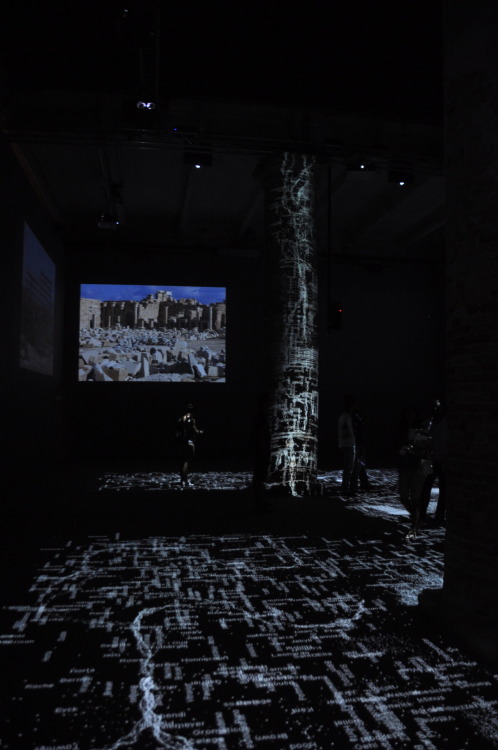
the Gateway by Norman Foster (shown above),

the exhibition by Valerio Olgiati (shown above) which displayed images which inspire various well known architects, the Venezuelan café with an exhibition by Urban-Think Tank of communities occupying unfinished buildings, Spain mon amour – where 200 Spanish students were flown over to Venice to explain a range of recent projects by Spanish Architects,
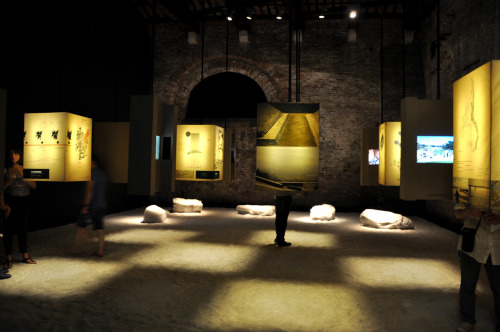
Cancha:Chilean soilscapes by Chile (shown above) with its rock salt floor and glowing boxes was incredibly atmospheric
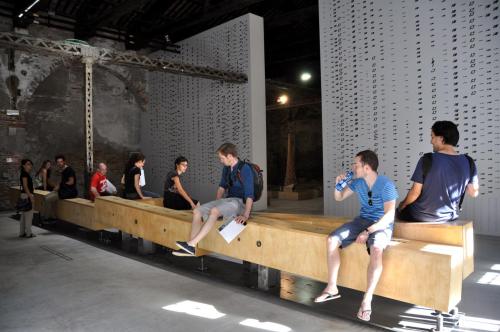
and perhaps my favourite – a simple (looking) interactive timber installation Shifting Ground by Heneghan Peng (shown above). Think long timber block which acts like a see-saw for 10 people which moved up and down depending on who and how many sat where. A short film by Wim Wenders, which describes a day in the life of Peter Zumthor towards the end of the exhibition was pretty inspiring too.
Images by Murdo McDermid
Pop-Up 3 / Campiello Tana
September 7th, 2012We had planned with some apprehension to locate the Transient Gallery around a wellhead at the entrance to the Arsenale in Camiello Tana. It offered the highest potential footfall and was less residential (unlike Campo Ruga previously), however there was an increased risk for upsetting those at the Biennale and it was considerably further from the studio than anything we’d tried before.
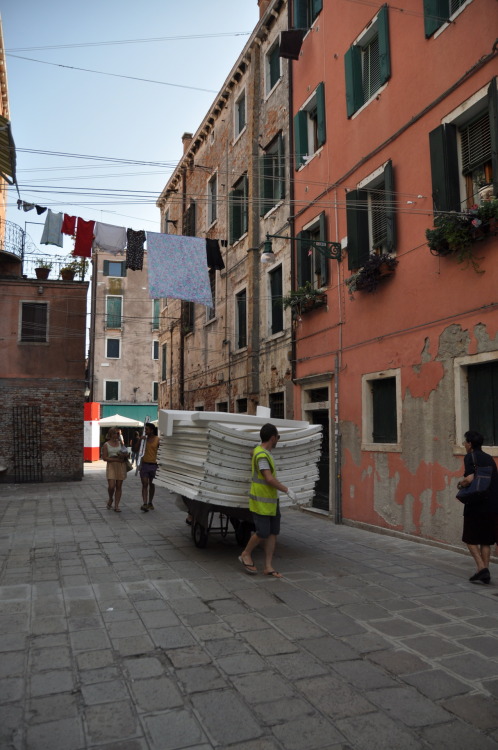
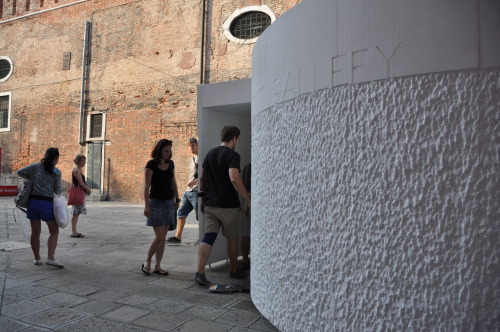
And so after borrowing a trolley from a local horticultural centre and recruiting a few willing volunteers (Dele, Jonathan, Lottie, Ian, Sandy and of course Anne who was instrumental in attracting foreign speaking visitors into the gallery) we were up again.
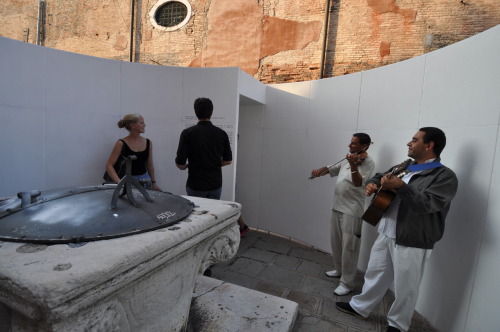
With a bit of persuasion we (well Anne) even managed to convince a pair of passing buskers to play within the gallery - you could hear the music on approach, you just couldn't see it. This added a level of intrigue which for us really went beyond our ambitions.
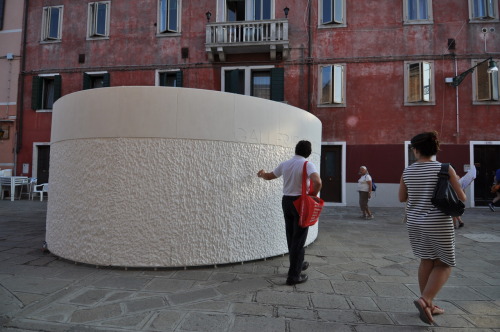
People were curious what the surface finish was and how it was achieved.

The return leg was a little hairy but we made it back without dropping it in the canal.
Images by Murdo McDermid
Biennale Visit 1 / The Giardini
September 6th, 2012I’d heard the usual stories about the Biennale – That it was all about opulence, egotism, politics etc so I decided to go with no preconceptions and not be dragged into that debate. Instead I’ll post some images of the pavilions that stood out for me.
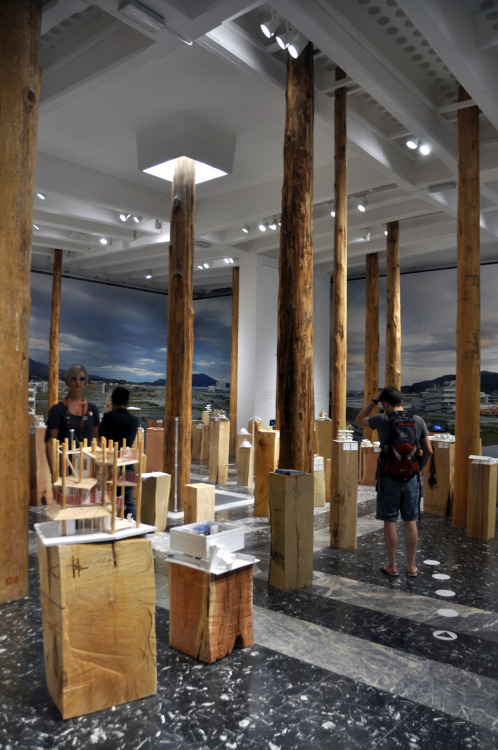
The Japanese Pavilion, winner of the Golden Lion prize, and curated by Toyo Ito was for me the most emotive. I’m sure this was largely because it was related to the tsunami of 2011 and specifically the town of Rikuzentakata, and consisted of a whole series of housing solutions largely in model format for those who lost their homes in the disaster.

The Nordic Pavilion is definitely worth a look, if for nothing other than a visit to see the Pavilion itself design by Sverre Fehn. It consisted of 32 models by 32 architects born after 1962 in Finland, Norway and Sweden that represented a house that reflects their personal philosophy of architecture.
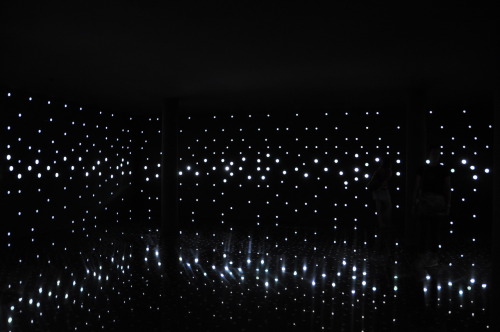
The high-tech, interactive Russian Pavilion curated by Sergei Tchoban was good too and on ground level revealed images and information about more than 60 secret, gated cities created during the Cold War from 1945-1989 in the Soviet Union for scientific research. This was, to me, more interesting that the QR code clad walls upstairs which when scanned using the handheld tablets detailed information about the Skolkovo project -a proposal for a “new city which promotes architectural and technological innovations in Russian urbanism.”
Other highlights were the German Pavilion with great images of adaptive-reuse projects, the Finish Pavilion with its clever use of wood and of course the main Biennale’s Pavilion itself which housed too my interesting exhibitions to digest in one go.
We plan on taking a walk round the Arsenale later in the week, after another public outing for the gallery.
Images by Murdo McDermid
Pop Up 2 / Campo Ruga
September 6th, 2012We identified Campo Ruga as our first location partly due to its close proximity to the Studio Hub. There was plenty of space in the Square and it wasn’t too busy. It was however, surrounded on all four sides by dwellings.
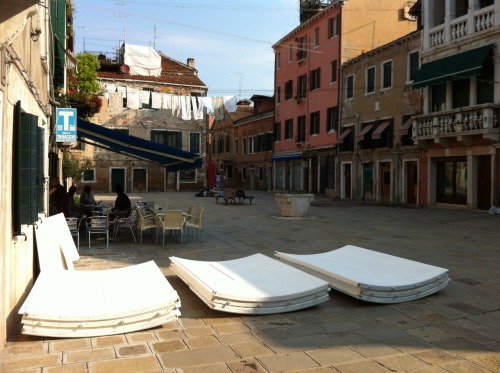

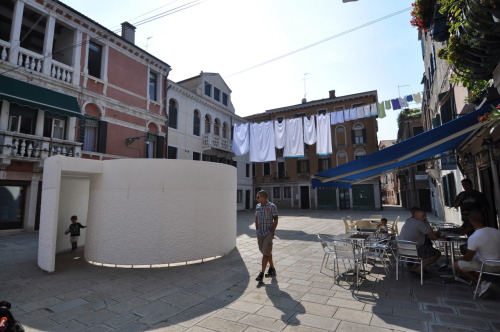
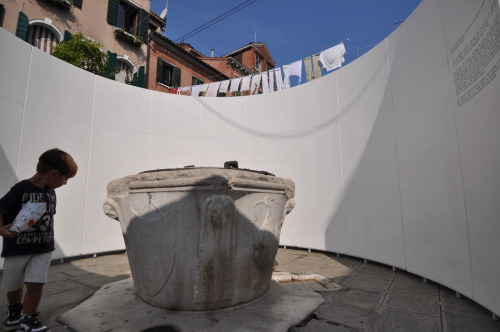
It took around 20mins to put up and after taking the residents a little (well, a lot) by surprise we quickly realised that an Italian Translator would have been handy. After a moment of slight panic it was up and when it became known the gallery was only there for a short period, the locals quickly came round.We made this assumption when the local barman handed us three free pints and we of course promised to email him some pictures of his pub – oh and there were a few “bellissima’s” mixed in there too, which made the whole thing worthwhile. See a time-lapse video of this install here (not sure if the kick at the end was intentional!)
Images by Murdo McDermid
Other Critical Dialogues
September 5th, 2012Before I post on our first foray into the public realm with the gallery, I’d like to mention the events of the other three practices: Do Architecture’s red balloon (Derive Veneziana), Stone Opera’s cardboard building blocks (Ludoarchiteca) and Pidgin Perfect’s theatrical open air dinner (Banchetto).
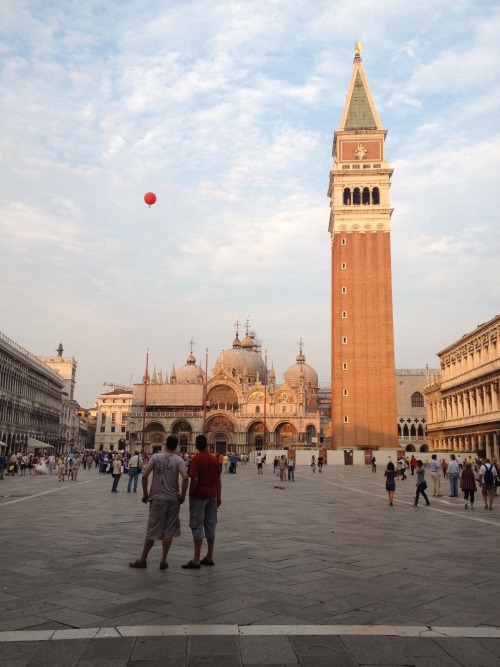
After a few dips in the canals of Venice, Do Architecture have collated some amazing footage of Venice which is unlikely to have ever been seen before.
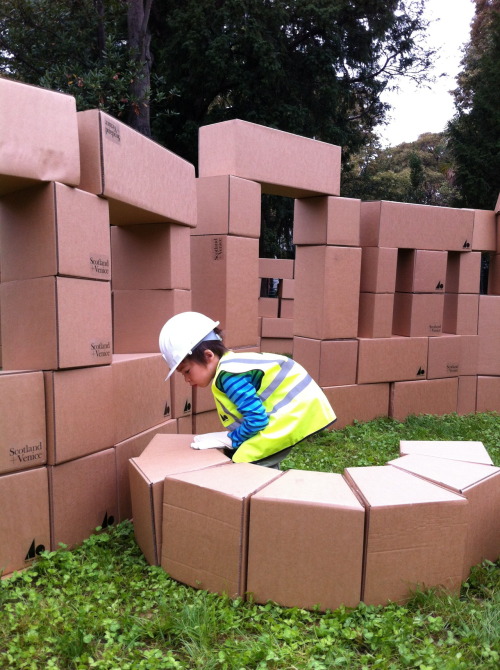
Stone Opera somehow managed to get 500 custom built cardboard boxes to Venice and created what could be described as a building site for kids – they seemed to love it and I know they weren’t the only ones.

The Banchetto certainly went down well with the locals and not even a Scottishesque downpour could stop the singing going well on into the night. It was a great public spectacle and a good night was had by all.
Images by Murdo McDermid


